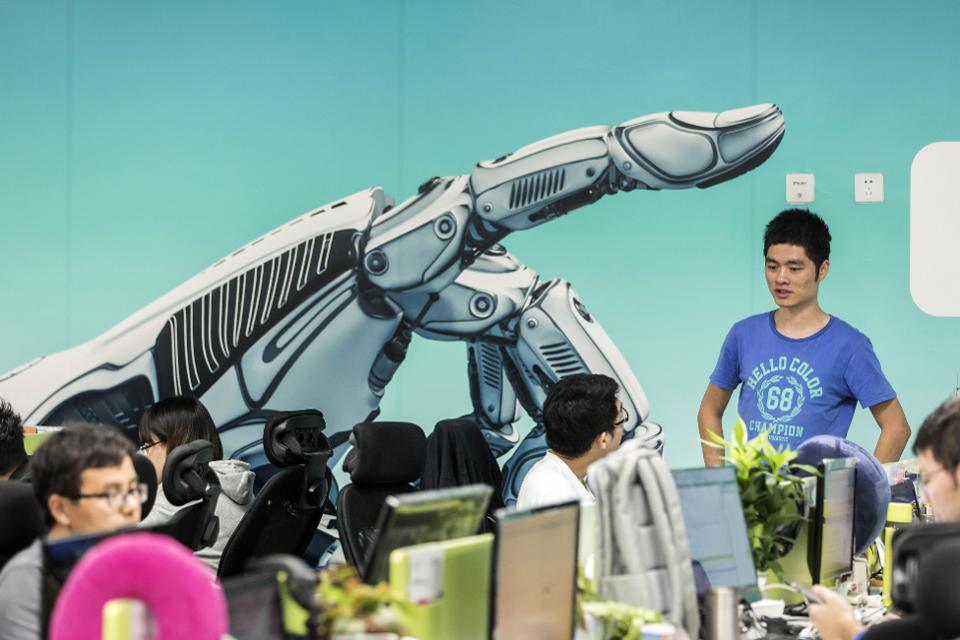What is the AI scene like in China compared to the U.S.? originally appeared on Quora: the place to gain and share knowledge, empowering people to learn from others and better understand the world.
copyright by www.forbes.com
 A major difference between US AI and China AI is that China AI is all about implementation.
A major difference between US AI and China AI is that China AI is all about implementation.
In research, US has about 60% of the world’s top 1000 top researchers, and China less than 10%. The top US researchers are both academia and industry, while the top Chinese researchers are generally in the industry, while academia lags behind the US substantially. Chinese research papers have increased in quality rapidly over the years, but it will take a long time to catch up with the US. (For more details on this, see my book AI Superpowers. )
Deep learning is the single greatest invention so far in the Era of Discovery, which was led by the US, but since the deep learning breakthrough, we’ve already entered the Era of Implementation where what matters is execution, product quality, speed, and data. And that’s where China comes in.
China’s technological execution is built on incredible work ethic. Nearly abandoning my wife in the delivery room is nothing compared to the entrepreneurs in China. As a venture capitalist in China, I once saw a startup claim that it offered great work-life balance because it was “996”. What’s 996? 9am to 9pm, 6 days a week. Most other startups in China are 997.
Chinese product quality has improved dramatically due to intense competition. Silicon Valley competition resembles the old wars where each side takes its turn to fire. In China, competition is like gladiators in the coliseum, fighting to the death with no holds barred. Fierce competition pushes entrepreneurs to improve the product at lightning speed, and to develop impregnable business models. As a result, Wechat and Weibo have evolved into arguably better products than products from Facebook and Twitter.
The Chinese market rapidly embraces new products and new paradigms. Just within the last 3 years, mobile payments have emerged as the dominant transaction tool, replacing cash and credit cards. Total transactions in 2017 were $18.8 trillion, even larger than China’s GDP. How’s that possible? China’s mobile payments are built on the world’s best infrastructure: nearly zero-transaction-fee, micropayment-capable, and peer-to-peer. Over 700 million Chinese users can pay each other, whether for online, offline, loan, or gift, whether to your child, a farmer in a village, or even a beggar.
All of this is amplified by China’s enormous market size, which generates the treasure trove of data which is the critical rocket fuel for AI. China’s data edge is 3 times the US based on mobile users ratio, 10 times the US in food delivery, 50 times in mobile payment, and 300 times in shared bicycle rides. (The few paragraphs above come from my TED talk this year.)[…]
Thank you for reading this post, don't forget to subscribe to our AI NAVIGATOR!
read more – copyright by www.forbes.com


What is the AI scene like in China compared to the U.S.? originally appeared on Quora: the place to gain and share knowledge, empowering people to learn from others and better understand the world.
copyright by www.forbes.com
In research, US has about 60% of the world’s top 1000 top researchers, and China less than 10%. The top US researchers are both academia and industry, while the top Chinese researchers are generally in the industry, while academia lags behind the US substantially. Chinese research papers have increased in quality rapidly over the years, but it will take a long time to catch up with the US. (For more details on this, see my book AI Superpowers. )
Deep learning is the single greatest invention so far in the Era of Discovery, which was led by the US, but since the deep learning breakthrough, we’ve already entered the Era of Implementation where what matters is execution, product quality, speed, and data. And that’s where China comes in.
China’s technological execution is built on incredible work ethic. Nearly abandoning my wife in the delivery room is nothing compared to the entrepreneurs in China. As a venture capitalist in China, I once saw a startup claim that it offered great work-life balance because it was “996”. What’s 996? 9am to 9pm, 6 days a week. Most other startups in China are 997.
Chinese product quality has improved dramatically due to intense competition. Silicon Valley competition resembles the old wars where each side takes its turn to fire. In China, competition is like gladiators in the coliseum, fighting to the death with no holds barred. Fierce competition pushes entrepreneurs to improve the product at lightning speed, and to develop impregnable business models. As a result, Wechat and Weibo have evolved into arguably better products than products from Facebook and Twitter.
The Chinese market rapidly embraces new products and new paradigms. Just within the last 3 years, mobile payments have emerged as the dominant transaction tool, replacing cash and credit cards. Total transactions in 2017 were $18.8 trillion, even larger than China’s GDP. How’s that possible? China’s mobile payments are built on the world’s best infrastructure: nearly zero-transaction-fee, micropayment-capable, and peer-to-peer. Over 700 million Chinese users can pay each other, whether for online, offline, loan, or gift, whether to your child, a farmer in a village, or even a beggar.
All of this is amplified by China’s enormous market size, which generates the treasure trove of data which is the critical rocket fuel for AI. China’s data edge is 3 times the US based on mobile users ratio, 10 times the US in food delivery, 50 times in mobile payment, and 300 times in shared bicycle rides. (The few paragraphs above come from my TED talk this year.)[…]
Thank you for reading this post, don't forget to subscribe to our AI NAVIGATOR!
read more – copyright by www.forbes.com
Share this: